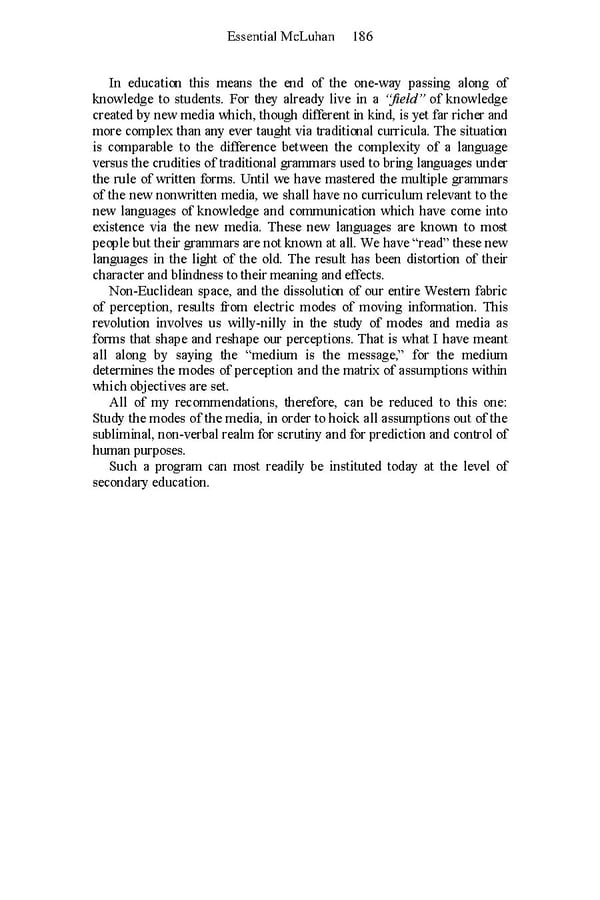Essential McLuhan 186 In education this means the end of the one-way passing along of knowledge to students. For they already live in a “field” of knowledge created by new media which, though different in kind, is yet far richer and more complex than any ever taught via traditional curricula. The situation is comparable to the difference between the complexity of a language versus the crudities of traditional grammars used to bring languages under the rule of written forms. Until we have mastered the multiple grammars of the new nonwritten media, we shall have no curriculum relevant to the new languages of knowledge and communication which have come into existence via the new media. These new languages are known to most people but their grammars are not known at all. We have “read” these new languages in the light of the old. The result has been distortion of their character and blindness to their meaning and effects. Non-Euclidean space, and the dissolution of our entire Western fabric of perception, results from electric modes of moving information. This revolution involves us willy-nilly in the study of modes and media as forms that shape and reshape our perceptions. That is what I have meant all along by saying the “medium is the message,” for the medium determines the modes of perception and the matrix of assumptions within which objectives are set. All of my recommendations, therefore, can be reduced to this one: Study the modes of the media, in order to hoick all assumptions out of the subliminal, non-verbal realm for scrutiny and for prediction and control of human purposes. Such a program can most readily be instituted today at the level of secondary education.
 Essential McLuhan Page 192 Page 194
Essential McLuhan Page 192 Page 194